When We Unite, Nothing is Impossible: My Story on K2
How our historic Winter Expedition on K2 became a symbol of brotherhood for all Nepalese people.
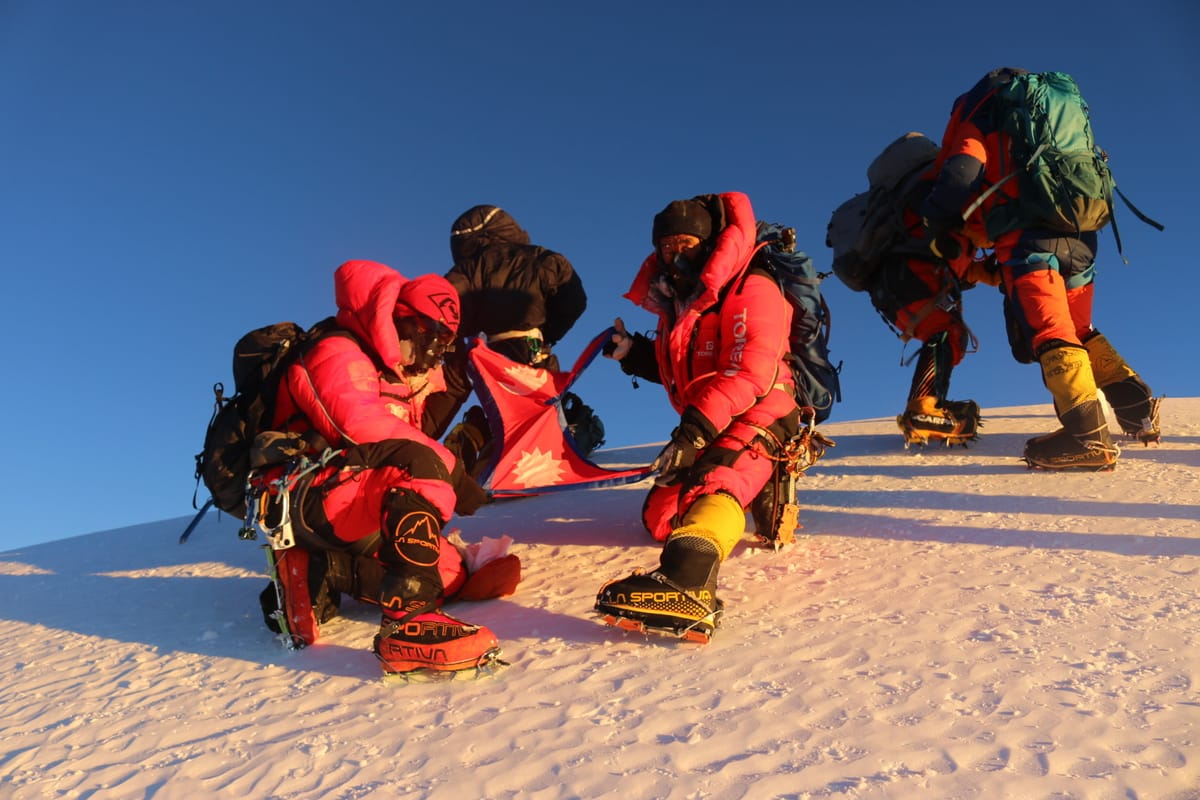
Right from the beginning, I have been saying that this expedition was for the pride of the nation, for the Nepalese climbing community, and for the future generation of Nepalese climbers.
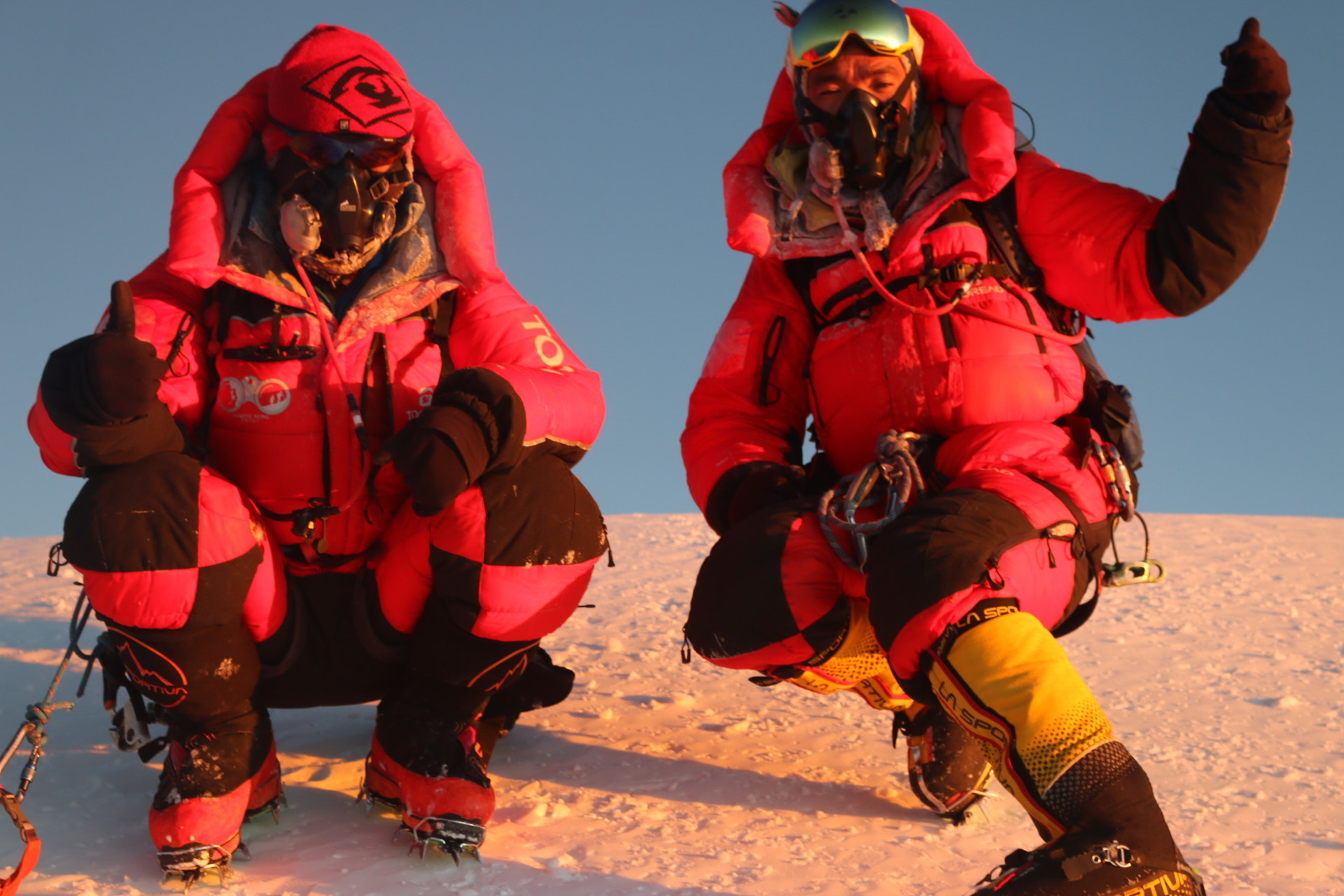
Nepalese Sherpa are regarded as the backbone for climbs above 8000 meters and when I realized that there were no Nepalese on the list of 8000-meter Winter First Ascents, I felt ashamed.
There are 14 different 8000-meter peaks on the planet with K2 as the last one remaining to be climbed in winter. I knew that if our team didn’t summit K2 on this attempt, then we would definitely lose the last one too.
Nepal is home to eight of the 8000-meter peaks, and all of our mountains were first credited to westerners. The reason is simple: We feel proud of the legendary Tenzing Norgay for making the First Ascent on Everest and our future Nepalese climbers will be proud of us for conquering K2 in our time. I attempted to climb K2 last winter but failed. But I still knew that my generation of Nepalese climbers would be cursed by future generations if we lose claim to all 8000’ers. This is the only reason that made me go to K2 in full preparation this time.
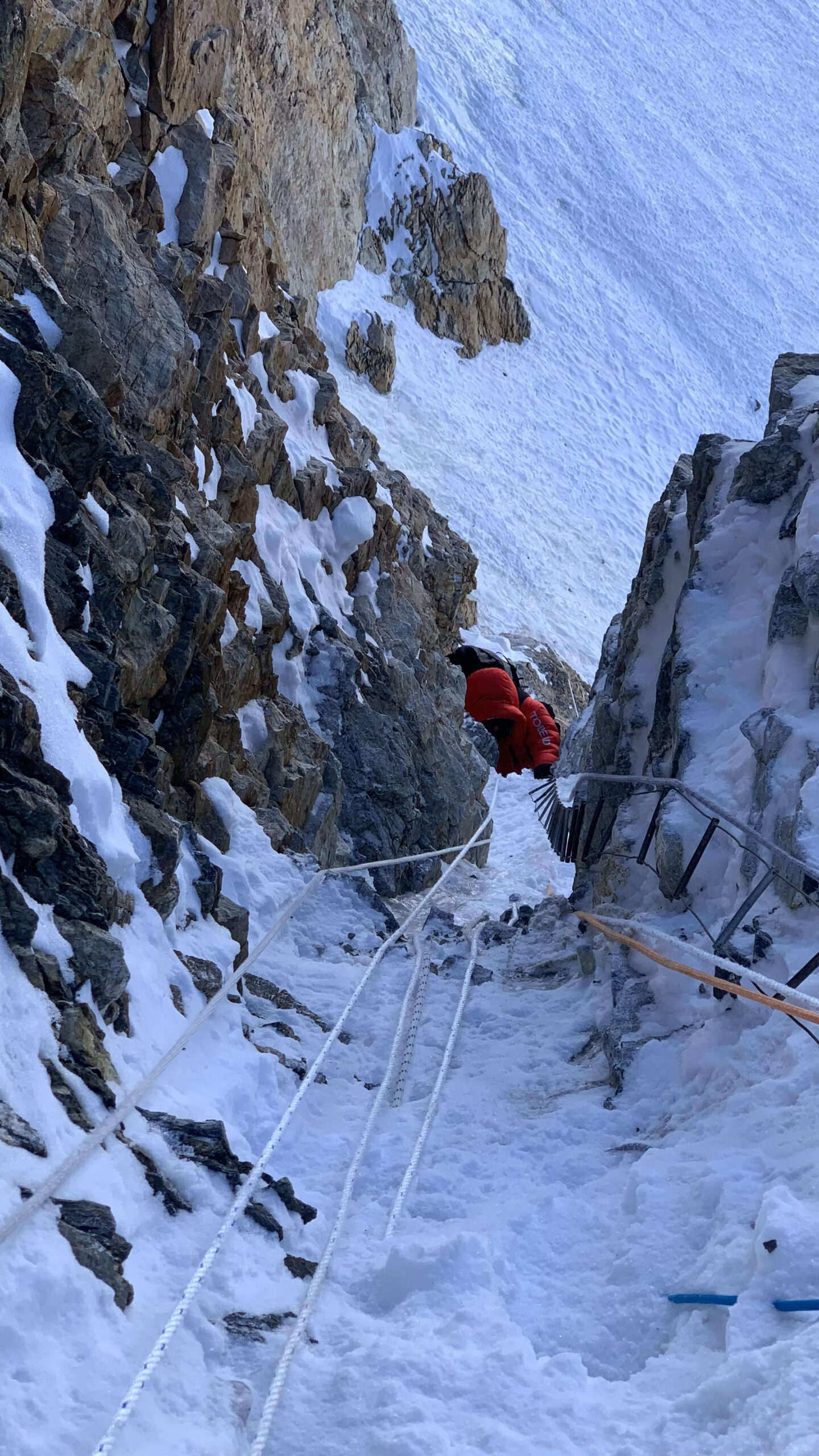
Country First
“I wanted to see the Nepalese flag put on the summit, whether I made it or not.”
When I planned to go K2 in November 2020, many of my climbing friends seemed interested in my project but I found that nobody wanted to spend such a huge amount of money, especially during Covid-19, which created economic crises and unemployment. We have been jobless since November 2019 and there is very little hope throughout 2021 as well, so it was understandable that climbers didn’t want to spend money at such a crucial time.
So I decided to entirely fund the operation by myself and support three Sherpa who have been working with me. I trust these men because we all come from the same place. It was also necessary to ensure that they were strong, technical, courageous and most importantly, that they were thinking like me - country first.
My dream, and my only real mission, was to see the Nepalese flag on the 8000 meter Winter First Ascent list. So it was only important that anyone from my team make it to the summit, regardless if I made it or not.

Train to Defeat Disappointment
In 2019, when I was on Everest, I got sick. Again in 2019/20, during the winter on K2, I was sick which made me rethink this project. Since March 2020, we have been under lockdown because of Covid-19. One of my family members is very conscious of exercising and training. Following her, I started running, cycling and climbing which helped me lose lots of weight and brought me back in shape. As a result, this time on Winter K2, I was physically fit and I was not sick at all.
Backing Out at the Last Minute
“Deciding not to go was actually good advice.”
One of Sherpa decided not to be part of the climb just a few days prior to our departure to Pakistan. He felt he might lose his finger or foot to frostbite or may not return back safe at all. His family kept pressuring him not to join. At the last minute, he decided not to. His disappointing decision put my other team members Dawa and Kili in a dilemma whether or not to go because their wives were pressuring them as well. Both Dawa and Kili work in Norway during summertime and Dawa’s wife kept on telling me that his Norwegian boss also didn’t want him to go, which actually was good advice.
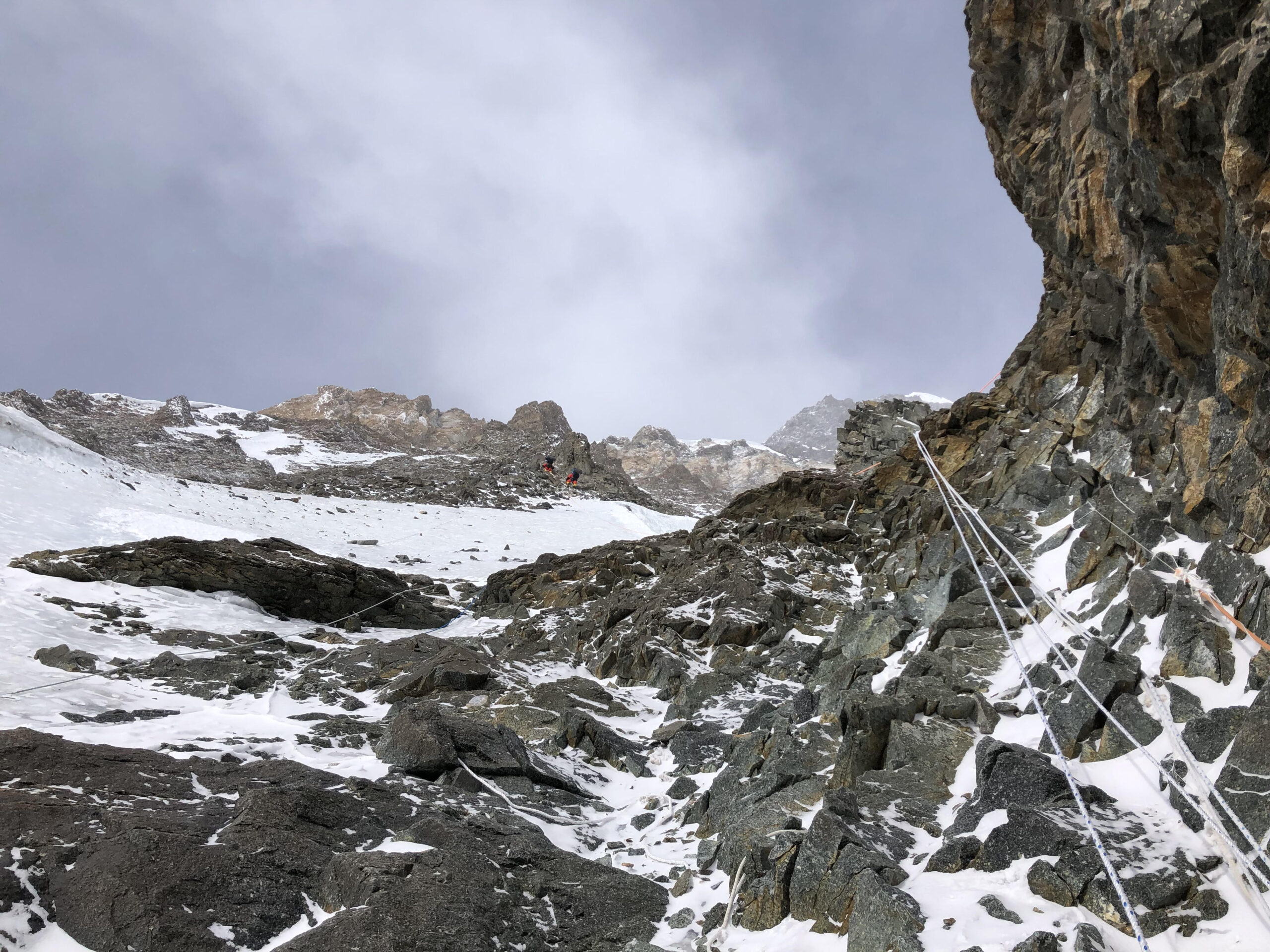
But these things put me into a very worrying situation because it takes four to six weeks of time to get a climbing permit in Pakistan and legally, I couldn’t just change my climbing members at the last minute. If receiving the climbing permit was easier, I could have randomly changed the team members because there were so many climbers interested in my project and I was not only sponsoring all the expenses but also paying them equally for their hard work with some climbing gear sponsorship. For my remaining team members, I convinced their wives and we traveled quickly to Pakistan before they changed their minds.

Grounded Before We Start
On December 6th, 2020, my three-person team flew to Qatar and on to Pakistan the next morning. We received our climbing permit from the Pakistan Alpine Club and we were ready to fly the next day Skardu, but bad weather kept us grounded.
There was no scheduled flight to Skardu on the 9th so we fixed an appointment with the Nepalese Embassy in Pakistan. K2 in winter has always been considered the biggest and hardest project, the Holy Grail so to speak, so we knew that anything could happen. We had the pleasure to meet our new Ambassador to Pakistan, His Excellency Mr. Topas Adhikari because it was necessary to inform them regarding our project and they offered to be our guardian in Pakistan to celebrate our success and help us in our difficulties.
https://www.instagram.com/p/CIcb11XJ2Zi/
Invisible Footmen
On the 10th, we flew to Skardu and spent two days there. Sirbaz Khan from Imagine Climb Tours had made all the arrangements for the trekking to base camp. We started our trek from Askoli on the 13th under snowfall.
We hired “Invisible footmen,” our porters from Baltistan, Pakistan and they were very strong and always cheerful. Though my team had better food to eat, wore branded gear, and carried lighter bags, the porters were happier and faster than us on the snow.
From our second day, we had to find and break the trail in deep snow which made us tired. I even lost some weight before even reaching K2. In all, these six days of trekking to base camp were not easy.

Not only were they carrying our load, but they were eating less, sleeping on thin mattresses in the snow, and even sharing single sleeping bags between two persons. These men, indigenous to the Karakorum, are the ones who made our K2 successful from the beginning.
On December 18th, we reached base camp and I gave an extra 4,000 Pakistani Rupees to each porter along with some fresh meat to eat on the way back home. They prayed and asked for a blessing for our successful return.
Meteorology Matters
We took complete rest on the 19th and 20th of December and the reason was our never-ending debate on which season to follow, the Meteorological Seasons from December 1st to February 28/29, or the Astronomical Seasons from December 20th to March 20th. We didn’t want to be in controversy so we chose to start our climb on December 21st.
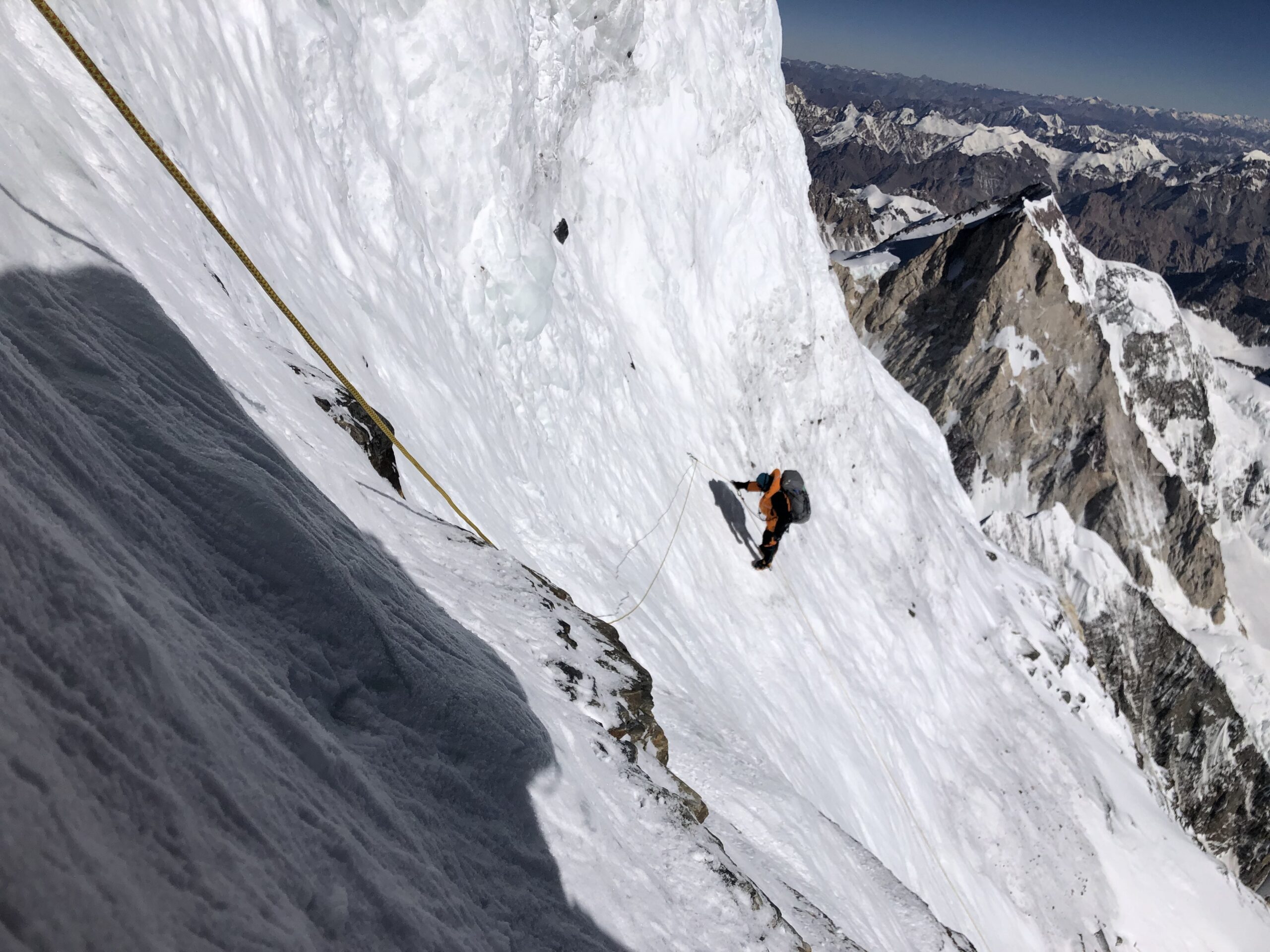
When we started, we had in our minds that we could finish the expedition within three weeks if the weather remained stable because the route to camp one was already cleared and we just had to progress above camp one.
Fixing Ropes
We were climbing without clients which means we had to carry less, we didn’t have to climb up and down guiding clients for acclimatization and we could progress faster. We were also not expecting any help from any other team to reach the summit; we had that much confidence in our team. So we started our climb on the 21st to camp one. The next day, we fixed the rope from camp one to camp two just in a single day, which was surprising news for the rest of the world. The next day, we took 800 meters of rope and a tent and deposited that at camp two, then returned back to base camp on the same day. The weather forecast for the next three days was looking bad which meant we should be in base camp. By then another Nepalese team led by Nimsdai Purja (“Nims”) had arrived.
https://www.instagram.com/p/CJP-XtKpgZK/
The weather forecast from the 28th to the 30th was looking perfect so we started our climb back on the mountain on December 27th to camp one and on the 28th to camp two where we set our camp at 6800m. On the same day after setting our camp, Kili and I went out for rope fixing above camp 2 up to 7000m.
Competing Teams Collide
On the 29th we moved our camp higher to 7000m so that we could sleep higher. When we reached 7000m, we realized we had only 900m rope remaining and the plan was to fix the rope to camp three the next day. In that 900 meters of rope, 600 meters rope were 6mm thick, which were very light to carry and of very good quality so we wanted to save those 600m rope for the final day to go summit. The remaining 300 meters of rope was not enough to go to camp three so we had to coordinate with Nimsdai Purja for more rope.
Nims knew about me and I knew about Nims but we never had any introduction and we never talked with each other before. So I made radio contact with Dawa from Seven Summits from 7000m to base camp and asked if Nims’s team could help us in bringing the rope to 7000m from where they were in lower camp two (6700m) on that day.
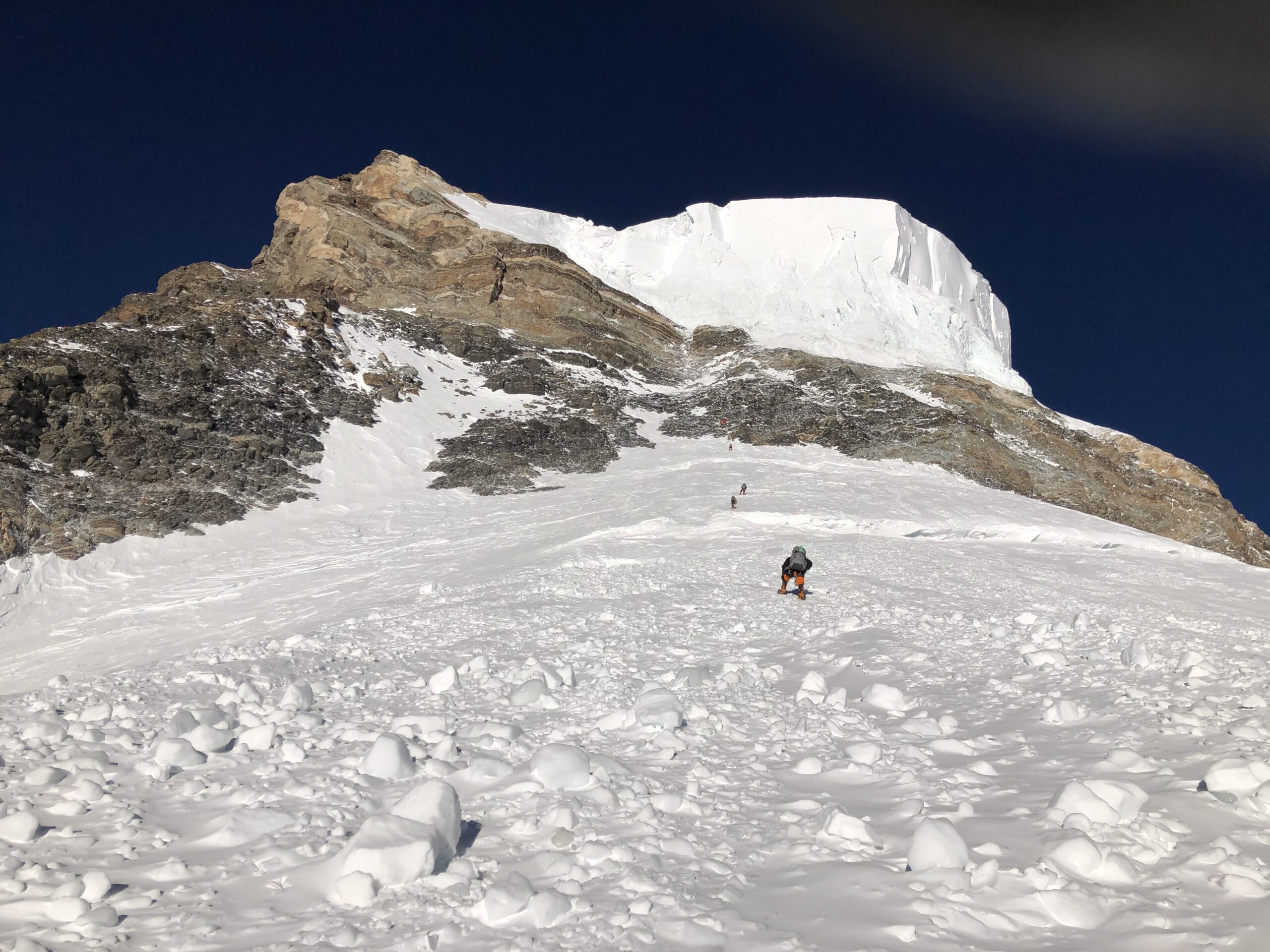
Dawa was organizing the expedition for Nims so it was easier to contact them. In a few minutes, we received a walkie-talkie call from Dawa saying Nims and his team would climb up to help us fix the line.

The next day on December 30th we started fixing the lines with the rope we had and, wherever possible, we cut old ropes from previous climbs and used them. Using old ropes and fixing our new 300m rope, we reached 7300m just below the ice section at camp three. When we were close to camp three, Mingma Tenzi from Nims’s team arrived to help us fix the 90m rope which touched the ice section where we stopped and deposited our remaining ropes and gear and started descending down.
Disclosing Our Mission
“That was the moment which made Nims’s team and my team one team on one mission.”
Descending about 200m below, we met Nims with 200m of 10mm rope which was quite heavy. It was so good to see Nims and Mingma Tenzi there because they were not acclimatized; still, they came all the way to camp three to help us. Then we all five Nepalese descended back to our camp at 7000m where we had a formal introduction with each other and discussed our mission and plan. We spoke for a few minutes only but that was the moment that made Nims’s team and my team one team on one mission because we both were climbing for our Nation.
https://www.instagram.com/p/CJlLJxsJYnN/
A Warm Feeling at -70 Degrees
We spent that night there and Nims and Mingma Tenzi descended back to their camp two. The next morning on December 31st, we all descended back to base camp and Nims invited us to join the New year’s Eve party at his camp. After our dinner, we were heading to their camp which was almost 10 minutes walk from our camp, where we met two Sherpas who were sent by Nims to invite us because Nims was expecting us at his camp by evening but we were not there. It gave me a kind of warm feeling. We started the party beginning with a bottle of whiskey which continued until 3 am. We had emptied several bottles of whiskey, rum, and vodka, and the hangover we had the next day was awful. The party that night created an environment to know each other and also it created a very good bonding between my team and Nims’s team.
A Week Stuck
Since we had already fixed the line to camp three, our next plan was the summit push and we were in need of a very good weather window. When we got our weather forecast, it showed bad weather with the high wind until January 8th so we had to spend a week inside the tent doing nothing.
On the 10th, Nims’s team went to camp two to check their gear and also to transfer oxygen. When some of their Sherpa reached camp two, they found that all their gear had blown away. Nothing remained. They returned back to base camp late at night in advance of our planned summit planning meeting the next day. That next day, I went down to Nims’s camp and we started discussing our plan.
The plan was to go to the K2 summit on January 15th, considering the current weather report. Nims decided to take his team on January 12th to camp two and then continue going up. I decided to take my team on January 13th and meet Nims team on the 14th at camp three.
They had to carry all their gear, tent, food, and oxygen, so they wanted to leave a day earlier to keep one spare day. We had most of our gear stashed at 7000m with 600 meters of rope, plus ice screws and 4 bottles of oxygen at 7300m, so we had lightweight bags packed up until 7000m. That’s the reason I told them we would help in carrying more rope to camp three.
So Close Yet So Far
As per the plan, Nims’s team went to camp two on the 12th and we started our climbing on the 13th to our camp at 7000m, just below the Black Pyramid. Nims team couldn’t make it all the way to camp three, so they set up camp just above the Black Pyramid. So on the 13th, our camps were close to each other but still, it was almost one and a half hours climb from our camp to their camp.
https://www.instagram.com/p/CKBsEVODxS4/
Which Weather to Trust?
Nims and his team were planning to stay there for two nights as they received a weather report which was showing an extremely high wind prediction for the 14th. Nims also told me that the summit plan had to change to the 16th because the weather was changing.
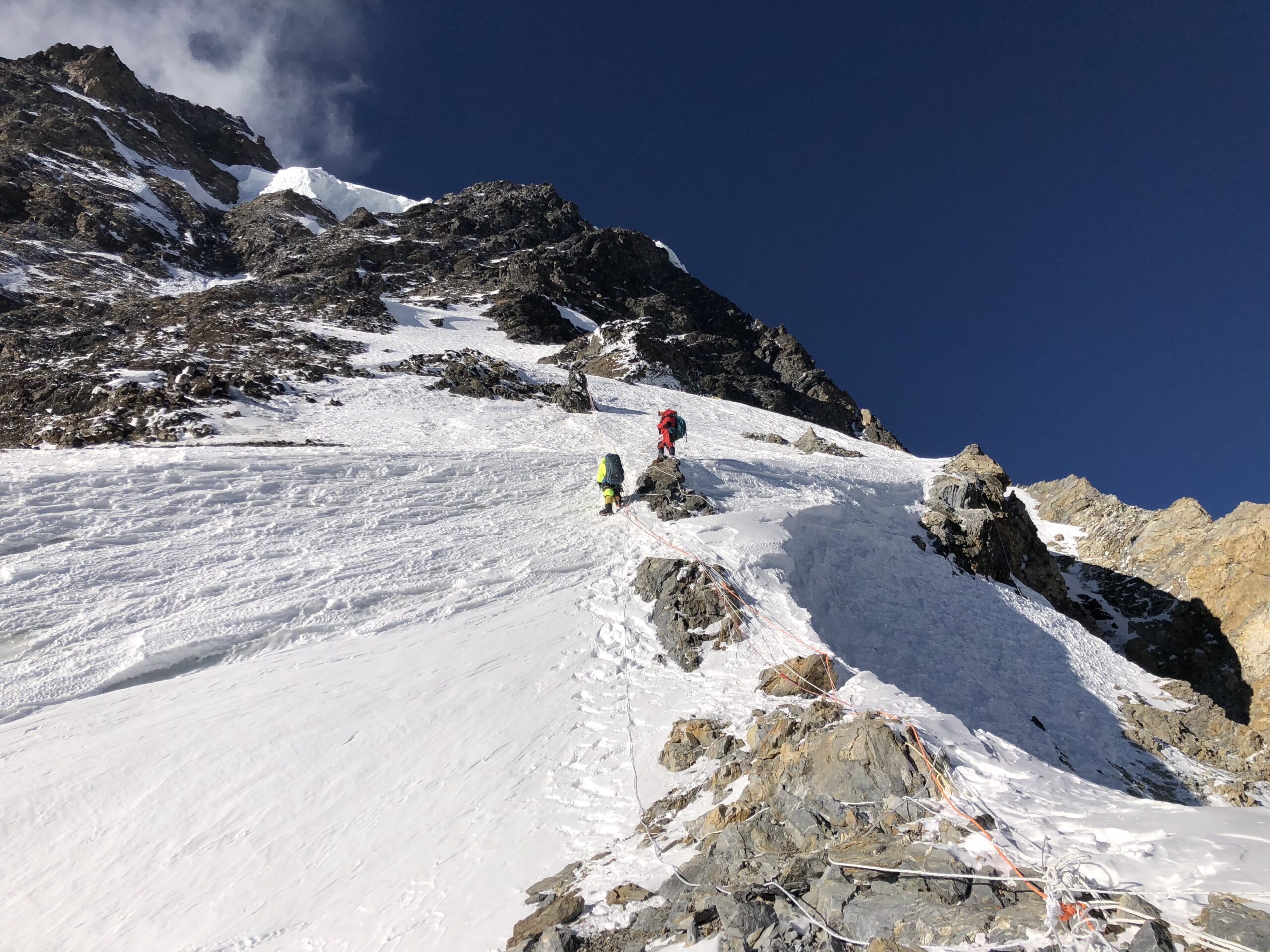
We were carrying the same frequencies walkie-talkie so at night Nims, Dawa, and I discussed further on the plan. Even Dawa didn’t want us to continue to camp three on the 14th. In the meantime, I received my separate weather report which was showing good weather on the 14th and bad weather on the 15th. I told them about my weather report but they didn’t believe it as my weather forecast was from Nepal and their weather forecasts were from foreign experts.
I didn’t agree with their planning of spending two nights there and that night we stopped the discussion saying we would make the decision the next morning, considering the situation. The next morning, I refreshed my weather report which again showed that the 14th was better than the 15th. Nims kept on connecting with his base camp team for the new weather report but nobody responded to him. Then only Nims and I started chatting on the walkie-talkie and I told him we would go to camp three and spend the night there and I also told him that we needed to use one extra day for fixing lines to camp four, to which Nims agreed. Then we packed everything and started our climb towards camp three. They arrived to camp three almost an hour before us. When we reached camp three, some of their Sherpa were setting up the camp, and Nims, along with two other Sherpa continued fixing another 300 meters of rope above camp three as well.
The Big Wall and a Bigger Crevasse
The next morning on January 15th, the weather at camp three and above was fine and we had our camp almost 300m above the point we stopped on December 30th, so Kili and Dawa Tenjin went down and brought all our deposit to camp three. After that, Mingma Tenzi, Mingma David, Sona and I started fixing ropes to camp four. We followed the way to camp four the same way as we do in the summertime. When we started climbing the big wall below camp four, we found a huge crevasse which was impossible to cross but we didn’t lose our hope. We scouted more to the right side but it was still the same. Then we descended back a little and tried to find our way on the left side. Again it was the same so we descended all the way back just above camp three and then branched out even farther. There we finally found a narrow crevasse covered by some fallen ice where it was possible to cross.
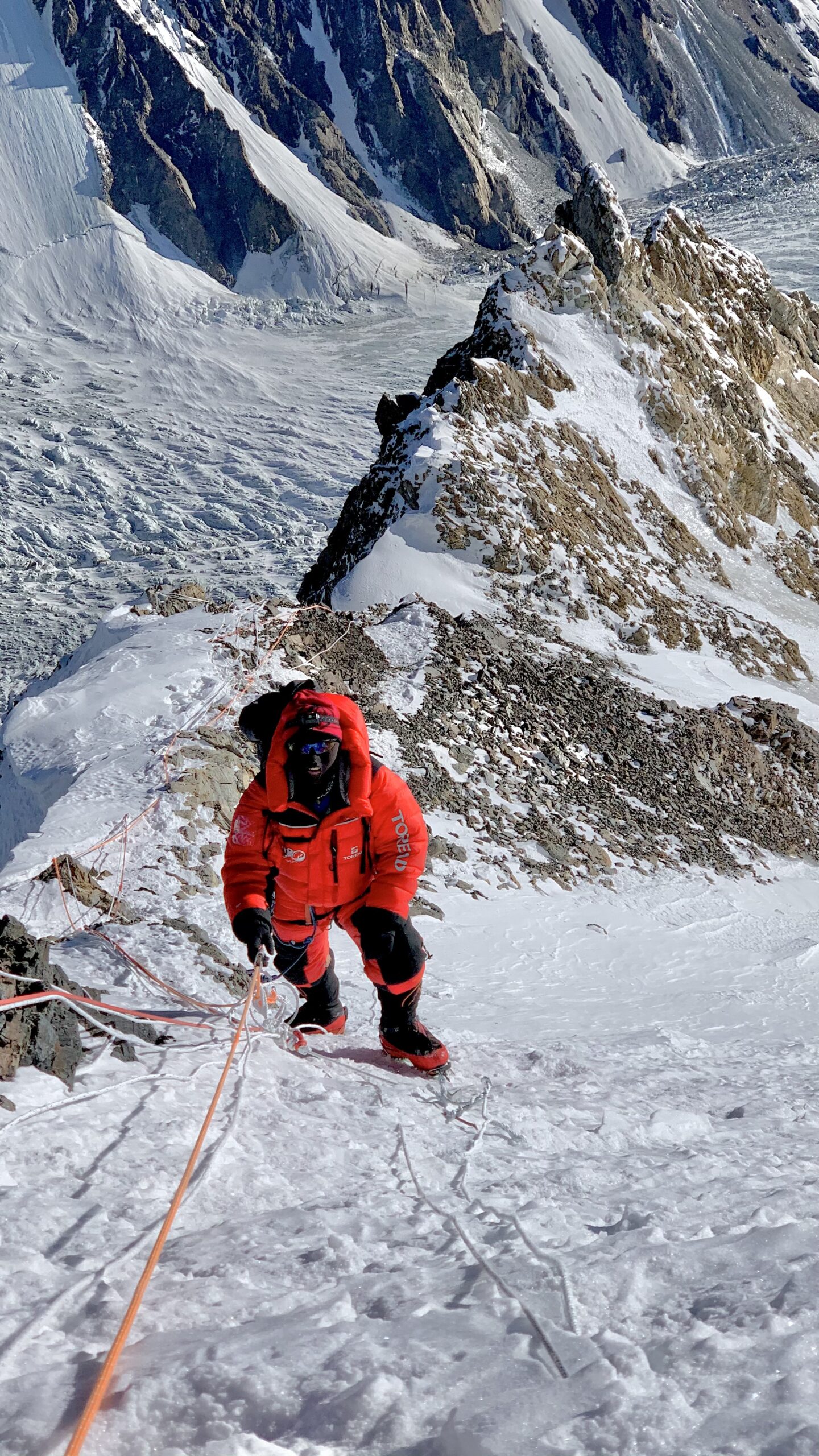
At first, I feared that I might fall into the crevasse but I had Mingma Tenzing belaying me which gave me the courage to move forward and cross the crevasse. That climb after crossing the crevasse way was very steep and it was not ice so I had the threat of falling down again in the crevasse or causing an avalanche because of my movement and pressure. So instead of using my ice axe, I started using snow bars to climb up about 20m, and then the way was comparatively easier. It was a very tiring day so for the last 30m to camp four, I asked Mingma Tenzi to lead. At around 4 pm, we finally made it to camp four and our gut reaction was that the K2 summit now belongs to Nepal. The way from camp three to camp four usually takes two to three hours but we took more than eight hours to find our way and fix the way to camp four. When we got back to camp three, it was already getting dark and we didn’t have enough rest to reach the summit the following night so we decided to leave at around 1 am instead of 11 pm.
The Summit Push
As per the plan, we woke up around 12 am and started putting on our gear. In winter, it takes almost 25 to 30 minutes to get a liter of water to boil, so all the team members were not ready. I was still feeling tired that morning, so I gave up my plan to go without oxygen. While I collected myself and my gear, Kili, Dawa Tenjin, Sona, and Mingma Tenzing were ready and they started the climb. I struggled to fit my oxygen regulator which didn’t fit and I had to find a spare from other friends which made my hand too cold. So I went back inside the tent to warm my hand.
When I finally got ready, some of them were already climbing closer to camp four. Mingma David, Pem Chhiri, and Gelje were also getting ready, and then we started climbing. We had a very good fixing team ahead so I was not worrying and I didn’t feel pressure to catch them.
The Frostbite Dilemma
When we began, there was no wind but when I was closer to camp four, a very cold and high wind started. My body was fine but my left foot was getting so cold that I started losing hope and I was worried that about losing it to frostbite. I was also worried that if I continue then I may put my other team in jeopardy so I was in a dilemma whether to continue or abort.
I tried to make a call on the walkie-talkie to my teammate, Dawa Tenjin but his radio was off. Then I kept on kicking the ice to make my feet warm which actually worked. Then after climbing a few hundred meters, we had sunshine which was warm enough to warm my feet and body. It was 6 am in the morning and we were still closer to camp four. Mingma David, Pem Chhiri, Gelje, and I met the rest of the team right at the traverse after the bottleneck. Mingma Tenzi was leading the way and he fixed lines all the way to the summit and we were climbing behind him carrying rope and other gear.
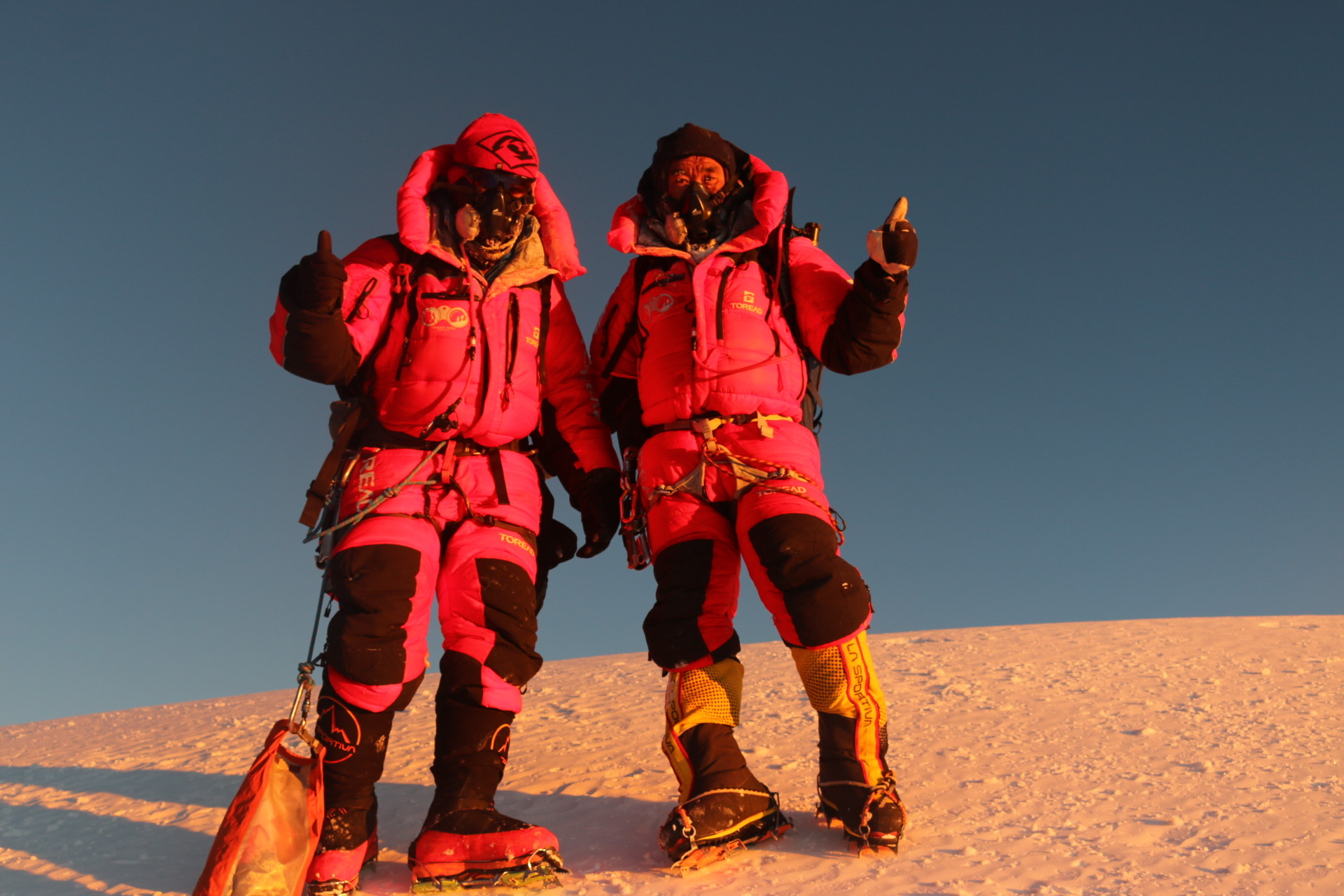
At 4:43 pm, we reached the summit of K2. Before leaving from base camp, we had our plan to stop 10 meters before the summit to wait for everyone. We joined shoulder to shoulder as Nepalese brothers and we walked together to the summit singing the Nepali National Anthem. The winter K2 Ascent was a historical ascent and every member in the team had worked equally and deserves equal credit, so we wanted everyone in the team to feel equal. At the start, there were individual agendas, but by the summit, there was no individual greed, but only solidarity and a joint force of three Nepalese teams with a shared vision. When we unite, nothing is impossible and it was the same on K2.
https://www.instagram.com/p/CKbGiqMD_1h/
My heart goes out to the climbers who shared a similar dream to me to reach the summit this season but were not able to return to their families.
Our climbing schedule:
21st Dec 2020: Climbed to camp1 and slept there
22nd Dec 2020: Fixed the rope from camp1 to camp2 and descend back to camp1
23rd Dec 2020: Transferred our rope, climbing gear, and tent to camp2 and descend back to base camp
27th Dec 2020: Climbed to camp1
28th Dec 2020: Climbed to camp2 (6800m) and fixed line to 7000m on same day
29th Dec 2020: Moved our camp from camp2 to 7000m and fixed rope till Japanese camp3
30th Dec 2020: Fixed line to camp3 and back to 7000m camp
31st Dec 2020: Descend back to base camp from 7000m
13th Jan 2021: Climbed from base camp to 7000m directly in one day
14th Jan 2020: Climbed to camp3
15th Jan 2020: Fixed line to camp4 and descended back to camp3
16th Jan2021: Climbed camp3 to summit and back to base camp
17th Jan 2021: Descended back to base camp
Overcoming Doubt
In the beginning, we were only a three-member team so there were lots of people who were saying that we wouldn’t be able to make the summit. There was even a news article which predicted that we might not be able to reach camp two. Many news articles kept on writing that we were a weak team but only a few knew our potential and just how fast we could be. There were friends and well-wishers who were encouraging us and there were people who were demotivating us too. In the entire K2 winter expedition, we just climbed for 11 days above base camp and in that 11 days, we made it to the K2 summit. In six days of climbing, we were able to fix the rope to camp three which was very impressive. After we finished fixing the route to camp two and camp three, we started getting more and more encouraging messages. When Nims’s team and my team joined hands, everyone in our community believed K2 would be climbed in this winter. It didn’t matter which one of us got their first, we did it for the pride of our country.
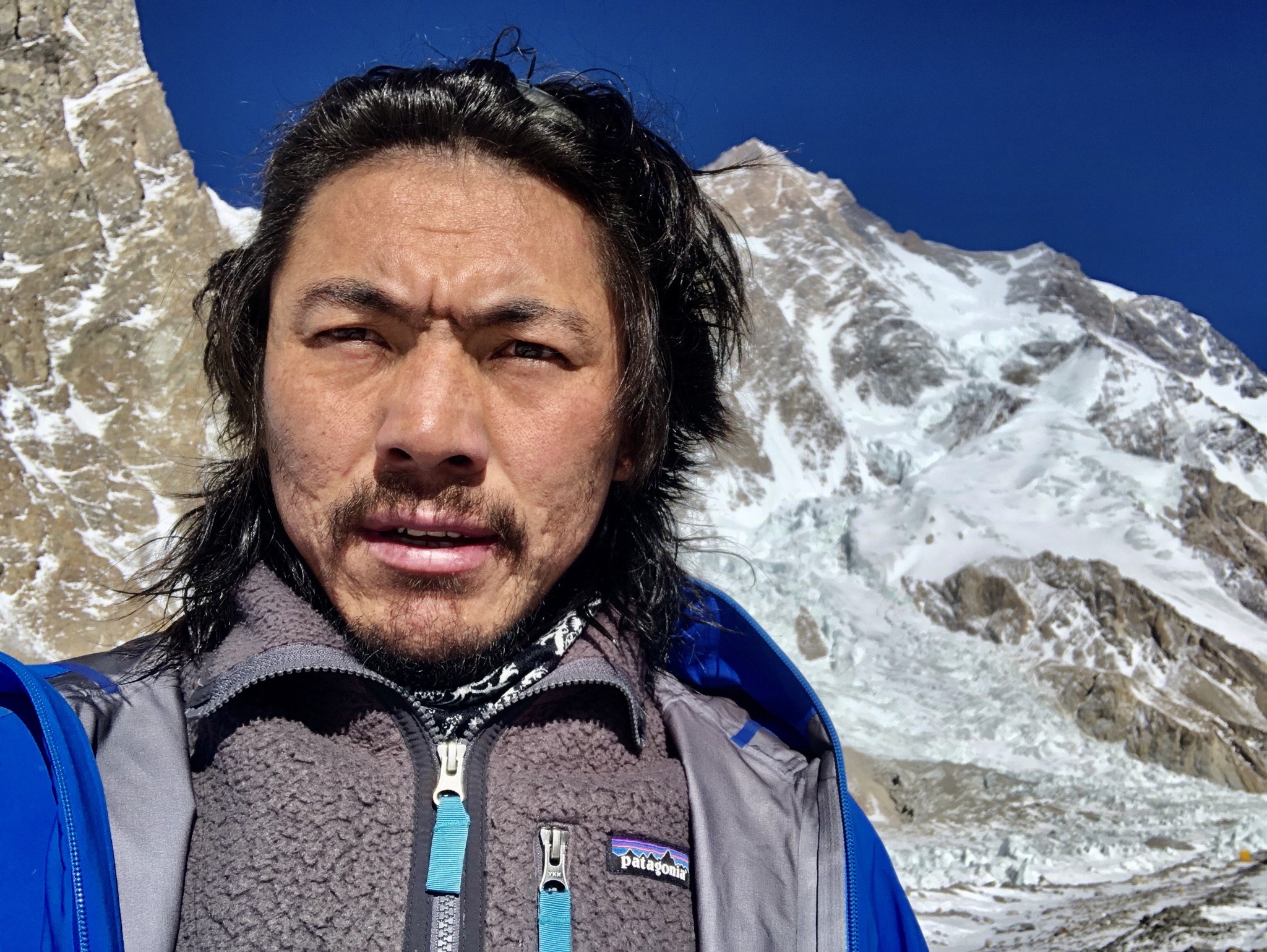


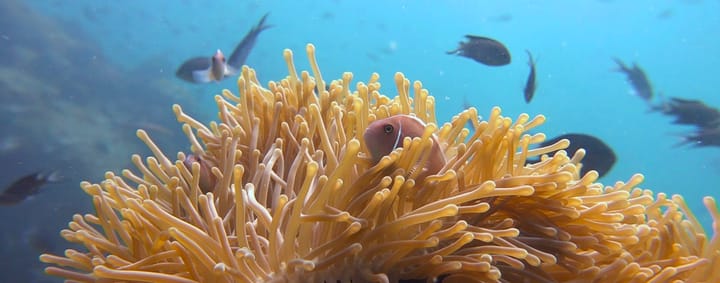
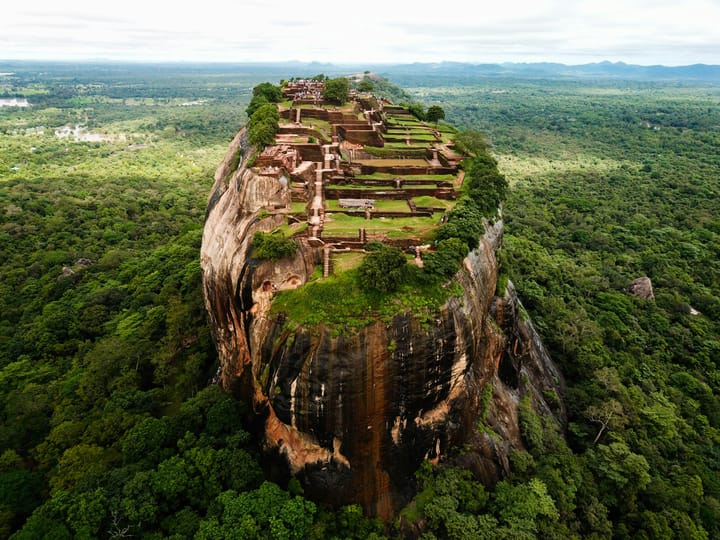

Comments ()